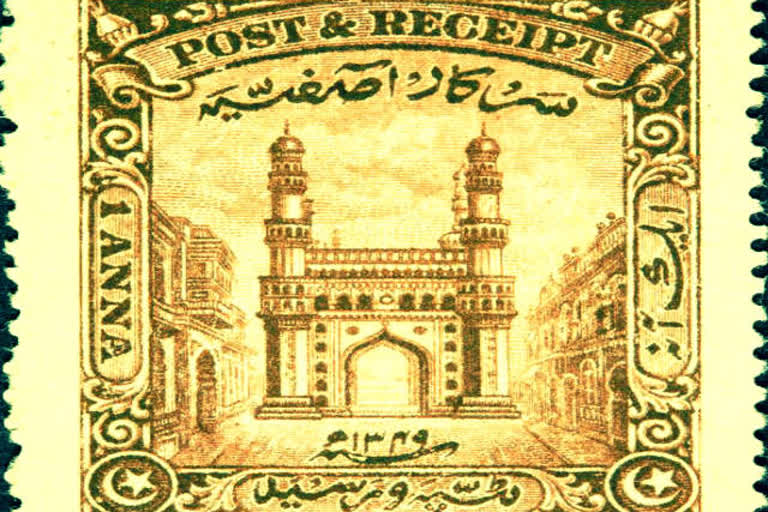New Delhi: The world's first postage stamp, the British 'Penny Black' of 1840, and a collection of over 150 rare postal stamps from Hyderabad of the Nizams - - offering an insight into the postal system of the erstwhile princely state - are currently on view here for the first time.
Exhibited at the Bikaner House here, the show of stamps, postcards, letters and other ephemera is titled "Property of A Gentleman: Stamps from the Nizam of Hyderabad's Dominions". It presents rarities from the Ewari Family Collection.
The collection, comprising 3 million stamps, dates back to the Postmaster General Nawab Iqbal Hussain Khan under Hyderabad's seventh and last Nizam, Mir Osman Ali. Carried forward by his grandson, the collection is represented by 158-odd stamps here in its first-ever display anywhere.
Hyderabad, one of the earliest princely states to adopt stamps, printed its own stamps from 1869 onwards until it became a part of the Indian Union in 1949.
It, however, could not use the human figure on its stamps being a traditional Muslim state. "So, unlike other countries that use the monograms of the rulers -- and even Penny Black which has the Queen's face on it -- Hyderabad could not do it," the show's curator Pramod Kumar K.G, said.
Endowed with rich architecture, landscapes and cultural heritage sites including Ajanta Ellora caves, architecture was the next natural choice.
"An early stamp depicts Ajanta caves, one has the Kakatiya gateway. This is a Muslim ruler who had no qualms about using the image of a Hindu site, a Buddhist site or a Muslim site. (The last Nizam) Osman Ali built a series of important institutions like the High Court, General Hospital, and universities -- all featured on stamps," Pramod Kumar, who heads Eka Archiving, said.
"The architectural takeoff point of the stamp collection is something unique."
The stamps used four languages -- Marathi, English, Persian (replaced by Urdu in 1930) and Telugu, all with their own scripts - to allow greater access for the diverse public.
Read:National Herald publisher moves to SC against Delhi HC's eviction order
Where were the stamps made?
"Very stylised monograms and Arabic calligraphy, which is a great art form in Deccan, was revived and calligraphers worked on beautiful stamps. Many designs happened locally, artworks were sent to England where plate engravings and printing format was created, sent back and printed here," the curator said.
Apart from their fiscal usage, stamps celebrated the material heritage and culture of the Nizams. For Hyderabad, use of exquisite calligraphy, multifarious languages and architectural tropes exemplify the princely dominion's influences and outlook.
In addition to the princely state's first and last stamps, the collection also includes stamps issued in Hyderabad to mark World War II.
"WW stamps are the only stamps with human images -- depicting a soldier returning to his wife and child. They decided to show the compassionate arrival of a soldier. This tells you how evolved the state was," Pramod Kumar said.
Stamps with the monogram 'Sarkar-e-Asafiya' (the Nizams belonged to the Asaf Jahi dynasty) are exhibited as well.
With an aim to draw in the art community and communication enthusiasts, the show of postal material allows stamps to become step-in windows to a bygone Hyderabad when messages were not exchanged at the click of a button.
The show, presented by The Gujral Foundation, is on view till March 24 here. Another show at the National Museum here is showcasing rare royal jewellery of the Nizams till May 5.



